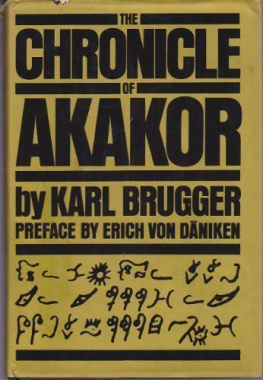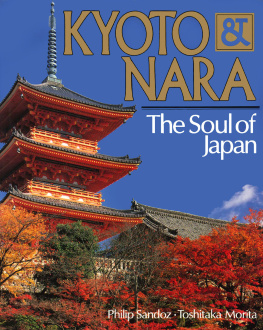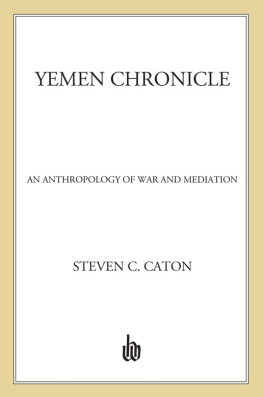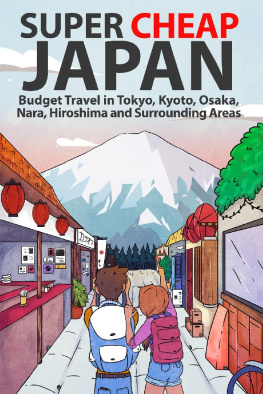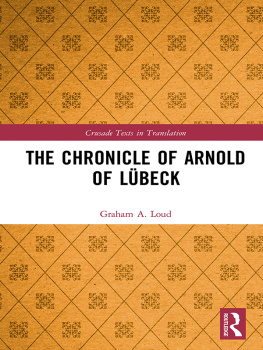Tatunca Nara - The Chronicle of Akakor
Here you can read online Tatunca Nara - The Chronicle of Akakor full text of the book (entire story) in english for free. Download pdf and epub, get meaning, cover and reviews about this ebook. year: 1977, publisher: Delacorte Press, genre: Religion. Description of the work, (preface) as well as reviews are available. Best literature library LitArk.com created for fans of good reading and offers a wide selection of genres:
Romance novel
Science fiction
Adventure
Detective
Science
History
Home and family
Prose
Art
Politics
Computer
Non-fiction
Religion
Business
Children
Humor
Choose a favorite category and find really read worthwhile books. Enjoy immersion in the world of imagination, feel the emotions of the characters or learn something new for yourself, make an fascinating discovery.
- Book:The Chronicle of Akakor
- Author:
- Publisher:Delacorte Press
- Genre:
- Year:1977
- Rating:3 / 5
- Favourites:Add to favourites
- Your mark:
- 60
- 1
- 2
- 3
- 4
- 5
The Chronicle of Akakor: summary, description and annotation
We offer to read an annotation, description, summary or preface (depends on what the author of the book "The Chronicle of Akakor" wrote himself). If you haven't found the necessary information about the book — write in the comments, we will try to find it.
The Chronicle of Akakor — read online for free the complete book (whole text) full work
Below is the text of the book, divided by pages. System saving the place of the last page read, allows you to conveniently read the book "The Chronicle of Akakor" online for free, without having to search again every time where you left off. Put a bookmark, and you can go to the page where you finished reading at any time.
Font size:
Interval:
Bookmark:
PREFACE BY ERICH VON DANIKEN
Scientists are not the only ones to strike it rich in exploring the unknown. Karl Brugger (born 1942), after completing his studies in contemporary history and sociology, went to South America as a journalist and learned about Akakor. Since 1974 Brugger has also been the correspondent of West German radio and television stations. He is now regarded as a specialist in Indian affairs.
In 1972, Brugger met Tatunca Nara, the son of an Indian chieftain, in Manaus at the meeting of the Rio Solimoes and the Rio Negro, that is, at the beginning of the Amazon. Tatunca Nara is the chief of the Ugha Mongulala, Dacca, and Haisha Indians.
Brugger, a skeptic and a conscientious researcher, listened to the truly incredible story the mestizo told him. After having checked it thoroughly, he decided to publish the chronicle he had recorded on tape.
As I myself am used to the fantastic and always prepared for the extraordinary, I am not easily startled, but I must confess that I felt uncommonly moved by Bruggers Chronicle of Akakor. It opens up a dimension that must make even skeptics see that the unthinkable is often imaginable.
Incidentally, The Chronicle of Akakor fits accurately into the picture that is familiar to mythologists all around the world. Gods came from "the sky," instructed the first humans, left some mysterious apparatus behind, and disappeared again "into the sky." The devastating disasters described by Tatunca Nara can be linked in the most minute detail to Immanuel Velikovskys Worlds in Collision. The story of the Indian prince who had never seen Velikovskys works, his extraordinary descriptions about the course of a global world catastrophe, and even the exact dating are simply astounding. Also, the assertion that certain parts of South America are riddled with artificial subterranean passages cannot shock the expert. In a former book, I have reported seeing such underground structures with my own eyes. The Chronicle of Akakor provides answers to much that is only assumed in other works on similar subjects.

Still unexplored regions in Amazonia
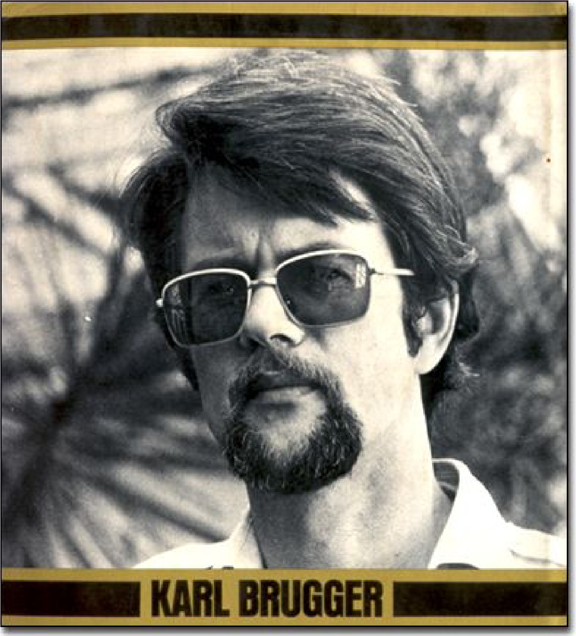
Karl Brugger is a German journalist who lives in Brazil
INTRODUCTION
Amazonia begins in Santa Maria de Belem, 120 kilometers from the shores of the Atlantic. In 1616, when 200 Portuguese under the leadership of Francisco Castello Branco took possession of this territory in the name of His Majesty, the King of Portugal and Spain, their chronicler described it as a friendly and inviting piece of land with giant trees. Nowadays, Belem is a large city with skyscrapers, traffic jams, and a population of 633,000. It is the point of departure for white civilization in its conquest of Amazonias virgin forests. But throughout 400 years, the city has managed to preserve traces of its heroic and mystic past. Dilapidated palaces in colonial style and tiled houses with enormous iron portals bear witness to the notorious era when the discovery of the vulcanization process for rubber had raised Belem to the level of a European metropolis. The two-story market at the port also dates from this period, and just about everything can be bought here: fish from the Amazon River or the ocean; sweet-smelling tropical fruit; medicinal herbs, roots, bulbs, and flowers; crocodile teeth, which are thought to have aphrodisiac properties, and rosaries made of terra cotta.
Santa Maria de Belem is a city of contrasts. Noisy business streets in the center, but the jungle world of Marajo Island, once upon a time settled by one of the great civilized populations that tried to conquer Amazonia, is a mere two-hour journey upriver, on the opposite bank. According to traditional history, the Marajoaras reached the island around A.D. 1100, when their civilization was at its height, but by the time the European explorers arrived, the people had already vanished. All that remains are beautiful ceramics, stylized figures clearly expressing grief, joy, dreams. They seem to tell a story, but what is it?
Up to Marajo Island, the Amazon is a confusing network of canals, tributaries, and lagoons. The river runs a distance of 6,000 kilometers: It rises in Peru and rushes down the Colombian rapids, changing its name in each countryfrom Apurimac to Ucayali and Maranon, from Maranon to Solimoes. From Marajo Island onward, the Amazon carries more water than any other river in the world.
A large motorboat, the only means of transport in Amazonia, takes three days to travel from Belem to the nearest larger settlement of Santarem. It may be impossible to understand the great river without having experienced these motorboats, which incorporate the Amazonian notion of time, life, and distance. One can ride 150 kilometers per day (not per hour) downriver; time on these boats is passed in eating, drinking, dreaming, and loving.
Santarem lies on the right bank of the Amazon, at the mouth of the river Tapajoz. The population of
350,000 is experiencing prosperous times, for the city is the terminal of the Transamazonica and attracts gold panners, smugglers, and adventurers. One of the oldest Amazonian civilizations flourished here, the people of the Tapajoz, probably the largest tribe of jungle Indians. The historian Heriarte stated that, if necessary, he could muster up to 50,000 archers for a battle. Even if this is an exaggeration, the Tapajoz were sufficiently numerous to supply Portuguese slave markets for eighty years. This formerly proud tribe has left nothing behind except archaeological specimens - and the river that bears their name.
Rivers, cities, and legends of the Amazonian world pass by on the stretch from Santarem to Manaus.
The Spanish adventurer Francisco Orellana allegedly fought the Amazons at the mouth of the Nhamunda River. Lake Lacy, the Mirror of the Moon, lies on the right bank of the river, close to the settlement of Faro. According to the legend, the Amazons came down to the lake from the surrounding mountains when the moon was full to meet their lovers, who were waiting for them. They dived for strange stones that, underwater, could be kneaded like bread but were hard on land. The Amazons called these rocks Muiraquita and gave them to their lovers. Scientists regard the stones as archaeological miracles: They are as hard as diamonds and artificially shaped, although evidence has shown that the Tapajoz had no tools to work this kind of material.
The real Rio Amazonas starts at the confluence of the Rio Solimoes and Rio Negro. It takes twenty minutes by boat to reach Manaus, which is without any road communication to the shore. This is where I met Tatunca Nara. The date was March 3, 1972. M., commanding the Brazilian jungle contingent in Manaus, had been instrumental in arranging this meeting. It was in the bar Gragas a Deus ("Thanks to God") that I first confronted the white Indian chieftain. He was tall and had long dark hair and a finely molded face. His brown eyes, narrowed and full of suspicion, were characteristic of the half-breed. Tatunca Nara was wearing a faded tropical suit, a gift of the officers as he explained to me later. His broad leather belt with a silver buckle was very striking. The first minutes of our conversation were difficult. Somewhat reluctantly, Tatunca Nara described in broken German his impressions of the white city, with its innumerable people, the haste and rush in the streets, the high buildings, and the unbearable noise. Only when he had overcome his reserve and his initial suspicion did he tell me the most extraordinary story I have ever heard. Tatunca Nara told of the tribe of the Ugha Mongulala, a people who were "chosen by the Gods" 15,000 years ago. He described two great catastrophes that had devastated the earth and spoke of the ruler Lhasa, a son of the Gods, who governed the South American continent, and of his relation to the Egyptians, the origin of the Incas, the arrival of the Goths, and an alliance of the Indians with 2,000 German soldiers. He spoke of giant stone cities and subterranean settlements of the divine ancestors. And he said that all these events had been written down in a document called the Chronicle of Akakor.
Font size:
Interval:
Bookmark:
Similar books «The Chronicle of Akakor»
Look at similar books to The Chronicle of Akakor. We have selected literature similar in name and meaning in the hope of providing readers with more options to find new, interesting, not yet read works.
Discussion, reviews of the book The Chronicle of Akakor and just readers' own opinions. Leave your comments, write what you think about the work, its meaning or the main characters. Specify what exactly you liked and what you didn't like, and why you think so.

